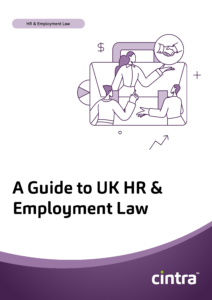It’s a good time to be an employee in the UK. Thanks to the Employment Relations (Flexible Working) Act 2023 you can now make flexible working requests from your very first day on the job—instead of the previous 26-week qualifying period! You can also make up to 2 request per year, previously you could only make one.
And we know your flexible working request is something you want to get right, so you’ve got the best chance of it being accepted. Let’s look at how to make a successful working request.
How to make a successful flexible working request
Ask yourself if it’s a reasonable request
Although you have a legal right to make flexible working requests from day one, you have to ask yourself: will I still be able to do my job if I work from home or change my regular hours?
If you work in tech or another industry where you predominantly work from a laptop, then the answer is more likely to be yes. However, if your work requires face-to-face contact with clients or other employees, then it may not be practical. Also consider your level of experience. If you are new in a role, it is likely that you will benefit from being in the workplace amongst your peers.
Review your company’s policies
Reviewing your company’s policies is important because it can provide valuable information about existing flexible working policies. This knowledge will help you understand the options available to you and may include useful tips that could strengthen your request.
A Flexible Working Policy should also clarify who to contact when making your request (i.e. line manager or HR), and how you go about the process.
If you cannot locate a flexible working policy, don’t hesitate to ask your line manager or HR department for guidance.
Be clear about what type of flexible working request you’re making
When making a flexible working request, be specific about the arrangement you’re seeking. There are multiple options available to you:
- Part-time: working for fewer days or hours each week than the standard full-time schedule.
- Term-time: employment restricted to periods when schools are in session, with breaks during holidays.
- Flexi-time: a work arrangement allowing you to choose the scope of hours you can work within a set number of contractual hours per week.
- Compressed hours: completing the full number of working hours over a reduced number of days.
- Hybrid working: a mix of remote work and on-site presence.
- Remote working: performing job duties from a location outside your workplace, often from home.
- Job sharing: a form of part-time employment where two or more people share the responsibilities and hours of one full-time position.
Clearly stating your preference will help make sure your request is understood and properly considered.
Consider who will be reviewing your request
When making a flexible working request, identify the decision-maker and tailor your request accordingly.
Consider the concerns that may be raised by the person approving the request, and address these as fully as possible in your request.
Performance quotas, keeping updated with relevant information, maintaining healthy and productive working relationships and work outputs are usually the key issues that are considered.
This targeted approach helps address concerns and supports a positive response to your request.
Provide all the information to make an informed decision
To make sure your flexible working request is taken seriously, make sure that you provide sufficient information.
Address why you are asking for flexible working, how you are set up at home or remote office location including your internet and office furniture, how you are managing other distractions, what security measures you have in place to protect confidential information, how you intend to maintain ongoing contact or how often you intend to be in the workplace.
It may also be a good idea to suggest a trial of 1-3 months to provide both yourself and your manager to ascertain the effectiveness and impact of your home working.
A well-presented request demonstrates your commitment and helps facilitate a constructive response.
Know your reasons for making the request
Even if your request is approved, your employer will naturally want to understand why you’re seeking the change. Where possible draw attention to any positive impacts that this can have on your productivity.
For example, your travel arrangements might mean that you are frequently late or needing to leave “on the dot” due to public transport. Working from home might alleviate this and allow you to keep better time and start and stop work in a less stressed and more focussed way.
Be confident and professional
When presenting your flexible working request, be confident and professional. Whether the meeting is in person or remote, your body language and presentation will significantly impact the outcome. So, make sure you convey your points clearly and objectively. Focus on the mutual benefits that this arrangement could bring.
Ask yourself: are you willing to compromise?
Your employer might suggest an alternative to your initial request. For instance, if you requested to work remotely three days a week, they might offer two days instead.
Being open to such adjustments can demonstrate flexibility and a willingness to work collaboratively, which may improve the chances of reaching a mutually acceptable arrangement.
You have a right to appeal the decision
Of course, there are a number of reasons your employer can deny a flexible working request. If the outcome of your flexible working request is not as hoped, you will have the right to appeal the decision.
An appeal will be reviewed by someone more senior in the company who has the authority to either overrule the initial decision or uphold the refusal.
Before making an appeal, consider modifying your original request to be more accommodating, which could increase the likelihood of a positive outcome.
You can also consider whether offering this arrangement as a trial for a few months would help.
Get the latest HR updates, straight to your inbox
Get the latest HR insights and best practice guides, direct to your inbox.
What you should include in your flexible working request
If your company does not have a specific form for this purpose, you should put request in writing (either by letter or email) and include the following:
- The date on which the request is made.
- A statement that it’s a statutory request.
- Details of the desired change to your work schedule.
- When you’d like the change to start.
- How long you want the change to last.
- Indication of whether you have previously made a flexible working request and, if so, the date/s of
Are you an employer struggling to manage flexible working requests?
Our HR software is built to deal with flexible working requests in light of the new Flexible Working Bill. Book a personalised demo today to see CintraHR in action.
We also offer an HR Advice Outsourcing service that can provide guidance and support as well as documentation and policies to support issues like this.

HR & Employment Law Guide
Grab your accessible summary of guidance and insights about where HR practices meet employment law.
Download your buyers guide


